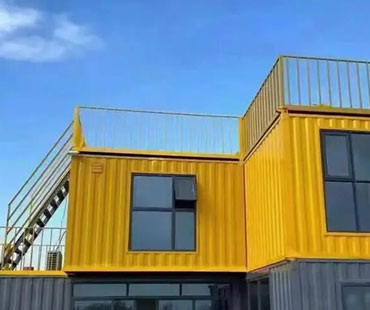As global trade continues to expand, the environmental impact of shipping and logistics has come under increasing scrutiny. Traditional shipping containers, while essential for transporting goods across the globe, often contribute to pollution, waste, and resource depletion. In response to these challenges, the concept of “green containers” has emerged, highlighting innovative designs and materials that prioritize environmental protection. This article explores the advancements in green container technology, the benefits of sustainable practices, and the future of eco-friendly shipping solutions.
The Need for Green Containers
The shipping industry is one of the largest contributors to greenhouse gas emissions, with container ships alone accounting for a significant portion of global CO2 emissions. Additionally, the production and disposal of traditional shipping containers can lead to substantial environmental degradation. As awareness of climate change and environmental sustainability grows, there is a pressing need for the shipping industry to adopt more sustainable practices. Green containers represent a step toward mitigating the environmental impact of logistics and promoting a circular economy.
Innovative Designs
1.Modular Design: One of the most promising innovations in green container technology is the modular design, which allows containers to be easily reconfigured for different applications. Modular containers can be used for various purposes, from housing to commercial spaces, reducing the need for new materials and minimizing waste. This flexibility can help maximize resource efficiency and lower the carbon footprint associated with manufacturing new containers.
2.Smart Containers: The integration of smart technology into container design offers opportunities for improved efficiency and sustainability. Smart containers equipped with IoT sensors can monitor temperature, humidity, and even air quality during transit. This data can prevent spoilage of perishable goods, reduce waste, and optimize shipping routes, leading to lower fuel consumption and emissions.
3.Aerodynamic Shapes: Innovative designs that focus on aerodynamics can significantly enhance fuel efficiency for container ships. By creating containers that reduce drag and improve airflow, shipping companies can lower fuel consumption and emissions. This approach not only benefits the environment but also results in cost savings for logistics providers.

Sustainable Materials
1.Recycled Steel and Aluminum: Many traditional shipping containers are made from new steel, which has a high environmental impact due to energy-intensive production processes. Using recycled steel and aluminum in container manufacturing can dramatically reduce energy consumption and greenhouse gas emissions. Recycled materials also help to divert waste from landfills, promoting a more circular economy.
2.Biodegradable Composites: Emerging materials, such as biodegradable composites made from natural fibers and res2.Biodegradable Composites: Emerging materials, such as biodegradable composites made from natural fibers and resins, are being explored for container manufacturing. These materials can break down more easily in the environment, reducing the long-term impact of discarded containers. Research is ongoing to develop composites that retain the durability and strength required for shipping while offering an eco-friendly alternative to traditional materials.
3.Eco-Friendly Coatings: Traditional coatings used on containers can contain harmful chemicals and contribute to pollution when they degrade. Innovative eco-friendly coatings made from non-toxic, water-based materials can protect containers from corrosion and environmental damage without harming the ecosystem. These coatings help extend the lifespan of containers while minimizing their environmental footprint.
4.Lightweight Materials: The use of lightweight materials, such as advanced polymers and composites, can significantly reduce the overall weight of containers. Lighter containers require less energy to transport, leading to lower fuel consumption and reduced greenhouse gas emissions. Additionally, lightweight designs can increase the efficiency of cargo loading and unloading, optimizing logistics operations.
Benefits of Green Containers
1.Reduced Environmental Impact: The primary advantage of green containers is their reduced environmental impact. By utilizing sustainable materials and innovative designs, companies can lower their carbon footprint, minimize waste, and contribute to a healthier planet.
2.Cost Savings: While the initial investment in green container technology may be higher, the long-term savings can be substantial. Reduced fuel consumption, lower maintenance costs, and decreased regulatory penalties for environmental violations can lead to significant financial benefits over time.
3.Enhanced Brand Reputation: As consumers become more environmentally conscious, companies that prioritize sustainability can strengthen their brand reputation and appeal to eco-minded customers. Utilizing green containers can serve as a powerful marketing tool, showcasing a commitment to environmental responsibility and attracting a loyal customer base.
4.Regulatory Compliance: Governments around the world are increasingly implementing stricter environmental regulations. Adopting green container practices can help companies stay ahead of these regulations, ensuring compliance and avoiding potential fines or legal issues.
The future of green containers looks promising as technological advancements continue to reshape the shipping industry. The ongoing research and development of sustainable materials and designs are expected to lead to more innovative solutions that further reduce the environmental impact of logistics.
Additionally, the rise of circular economy principles will likely drive the adoption of green containers. As businesses seek to minimize waste and maximize resource efficiency, the demand for sustainable shipping solutions will grow. Collaborations between manufacturers, logistics providers, and environmental organizationswill be crucial in advancing the field of green containers and fostering innovation.


